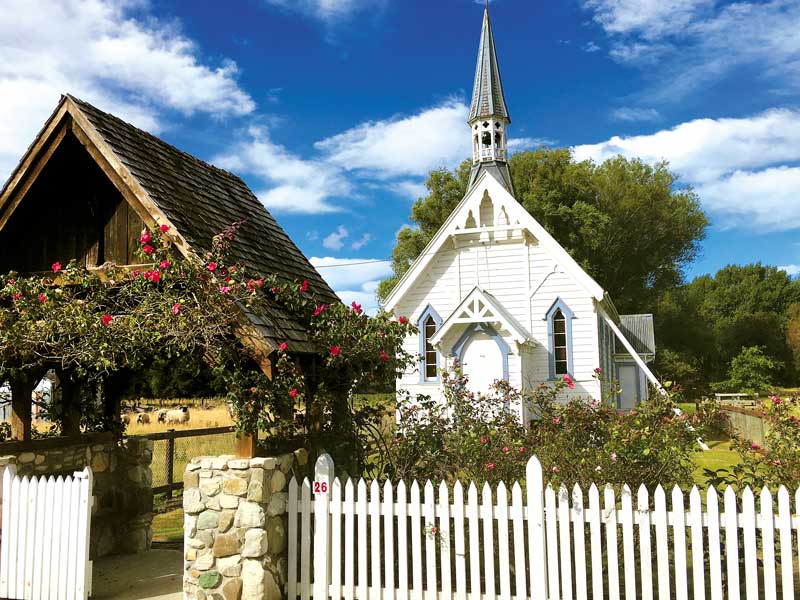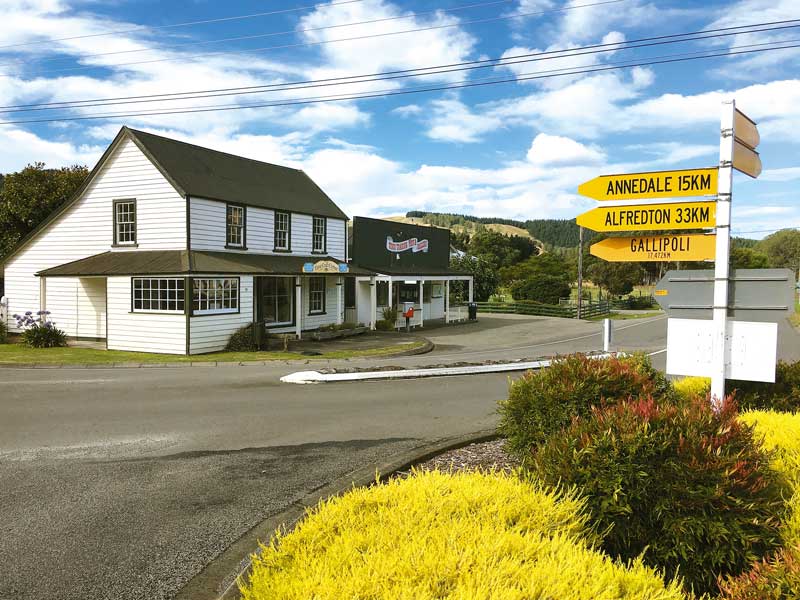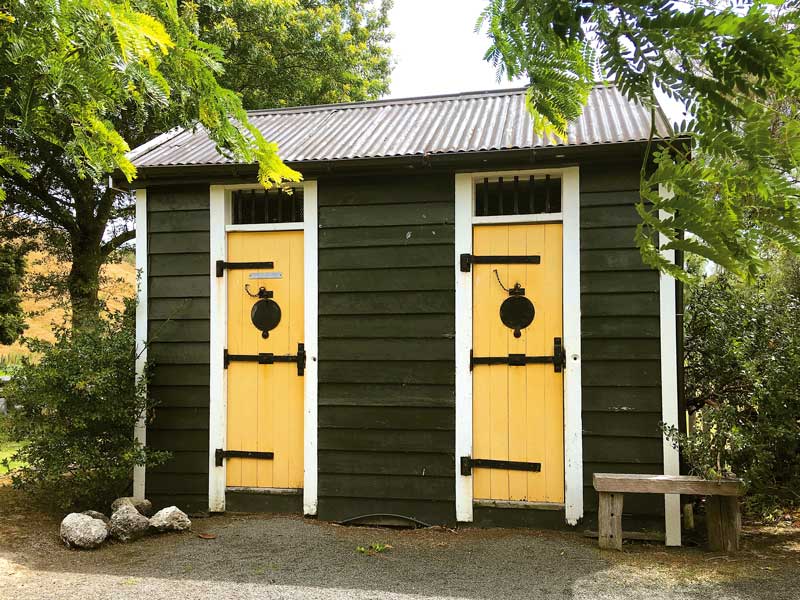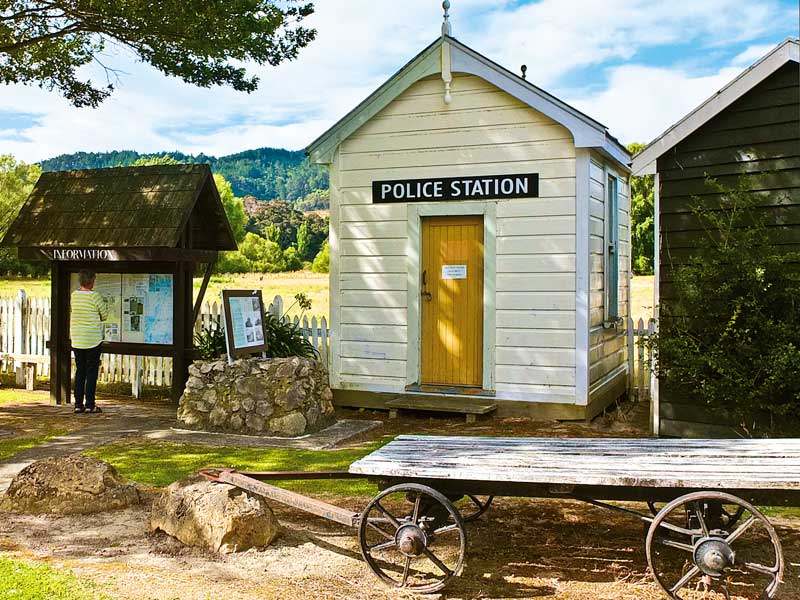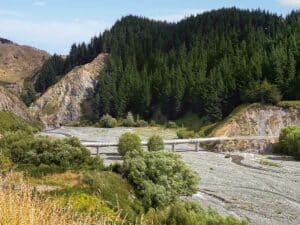The day we drove to Castle Point in the Wairarapa, a monstrous wind nudged spitefully at the caravan and clawed its way through roadside bushes. It stripped the spikey leaves of cabbage trees, and flocks of sparrows, caught up in its fury, were catapulted through the air like tiny missiles.
In those conditions, staying at the beach was not a good option. We parked instead in a paddock adjacent to the bar and cafe of an inland village called the Tinui. This was a fortuitous decision, for we discovered that Tinui’s tidy and tiny cluster of buildings has a fascinating history. The hamlet (current population around 25) comprises an impressive war memorial hall, an old postal and telegraph office, and a 19th century general store (now a craft shop). The picnic area is home to a restored jail (1877), part of the old schoolhouse and various carts and machinery from the pioneering days, including an oddity called a turnip cutter.
But it was none of these that brought fame to the little settlement. In the centre of the village, three signposts point to Annedale 15km, Alfredton 33km, and strangely, Gallipoli 17,472km. It is the latter signage that is the most significant. Follow where it points and 200 metres out of the village is the small, beautifully proportioned and carefully tended Church of the Good Shepherd, which is still in use today. I was sorry that it was closed and the windows were too high for me to peer inside, for it was in this place at 7.30 in the morning on 25 April 1916, that the then vicar of Tinui, the Rev Basil Ashcroft, held a service to remember the seven men from the district who had lost their lives at Gallipoli. This service is recognised as the first commemoration of ANZAC Day. It was attended by the district’s residents and the local Boy Scouts.
One sign of the time was that the offertory received during the service added up to four shillings and sixpence! Following the service, 40 of the congregation clambered up the high ridge of nearby Mt Maunsell. They carried with them a cross made of jarrah, which they erected on the summit so that it stood out against the skyline. This has now been replaced with a 3.6 metre-high cross made of more permanent material and firmly anchored in situ with concrete.
A steep walking track leads up to it. I’m no mountain goat and an hour-and-a-half one way looked beyond my capabilities. The track begins at another memorial marked by a large round boulder and a small pine tree (Pinus brutia) that was bravely fighting the wind. It was planted on 25 April 2016 and is a direct descendant of the pine tree that in 1915 stood on the legendary Lone Pine Battle site at Gallipoli.
It seems that in this tiny dot on the map in Wairarapa, no wind will ever wipe away the memory of a war that was meant to end all wars.

Raglan: winter beach life
Mel de Jongh discovers that Raglan is not just a summer destination and offers plenty to spark joy over the winter months

